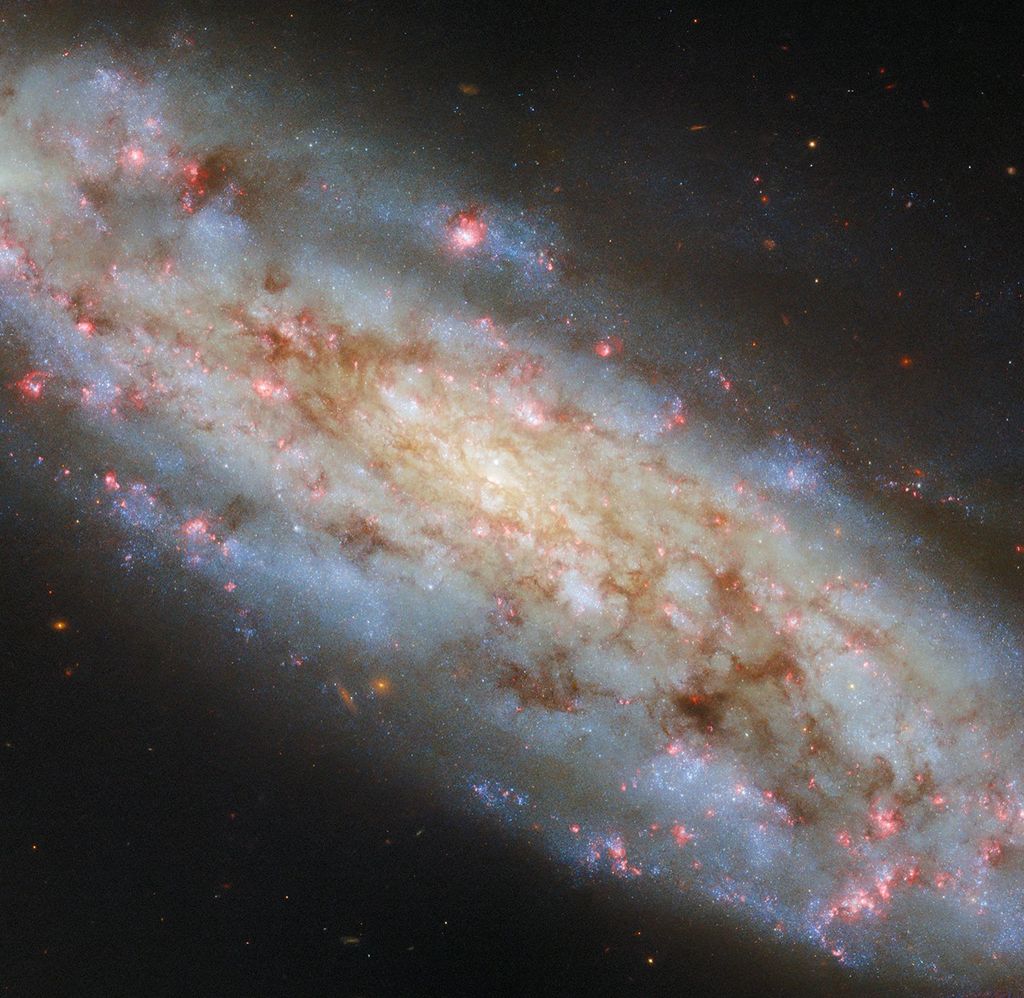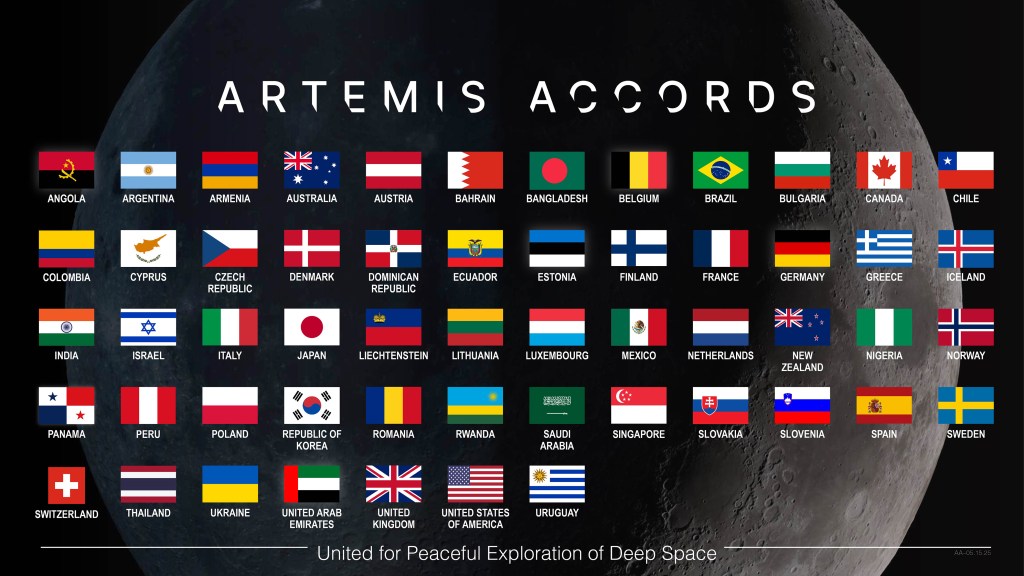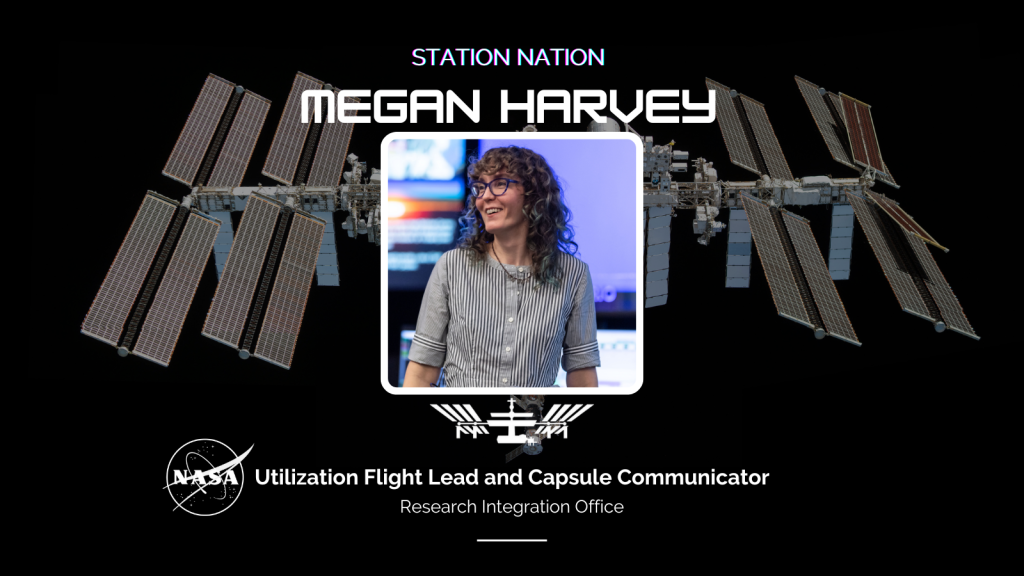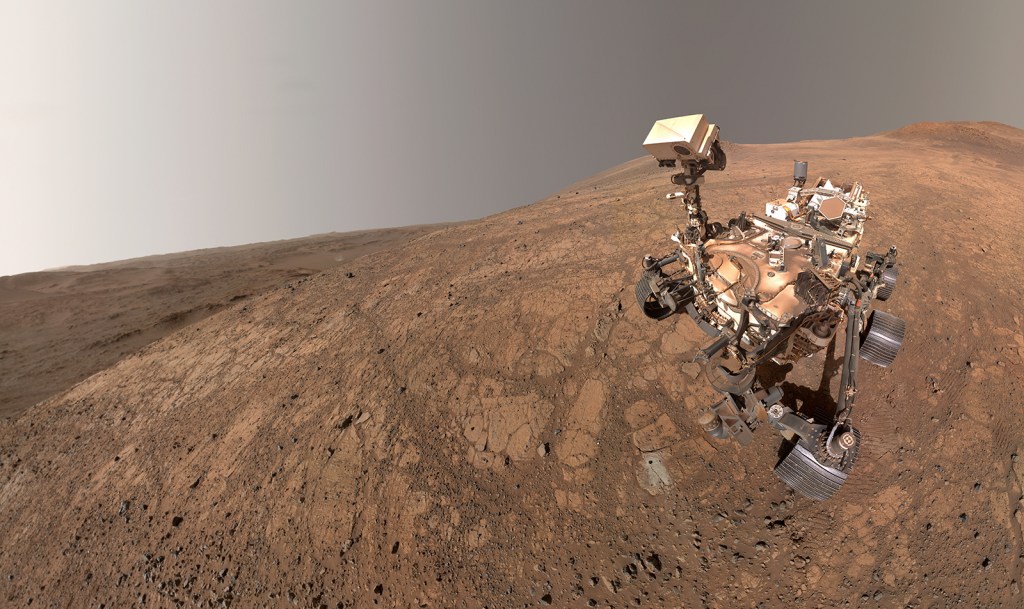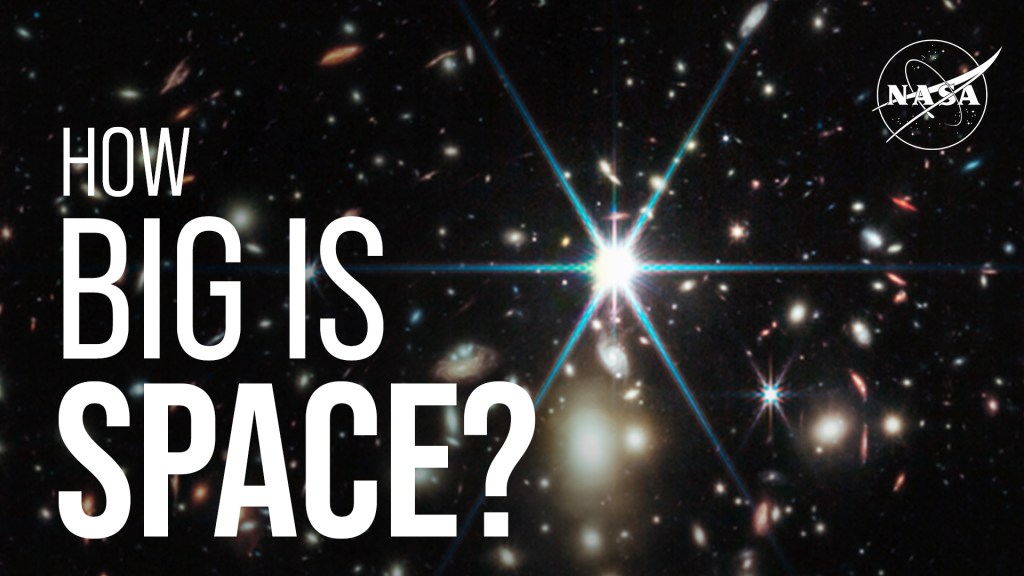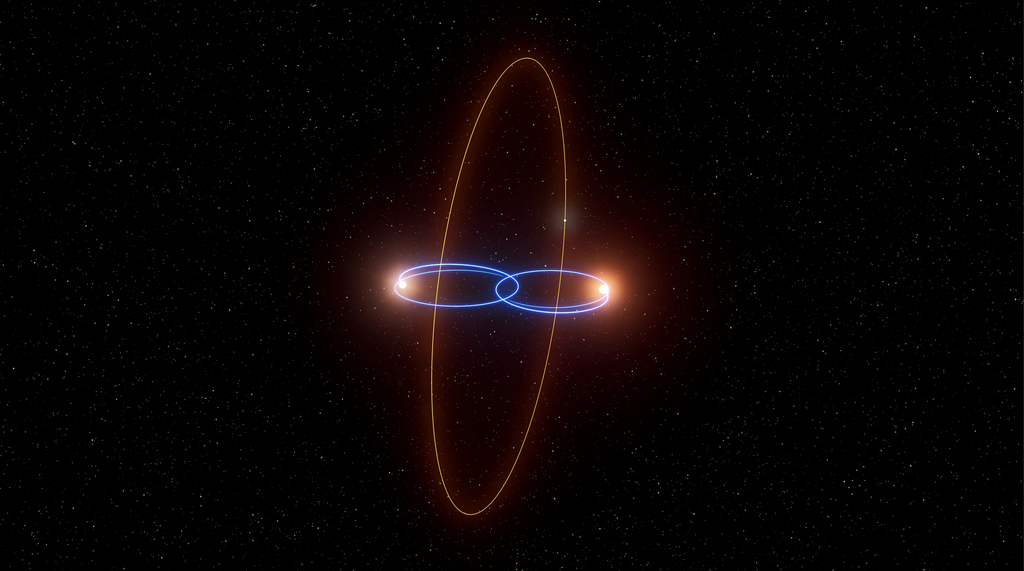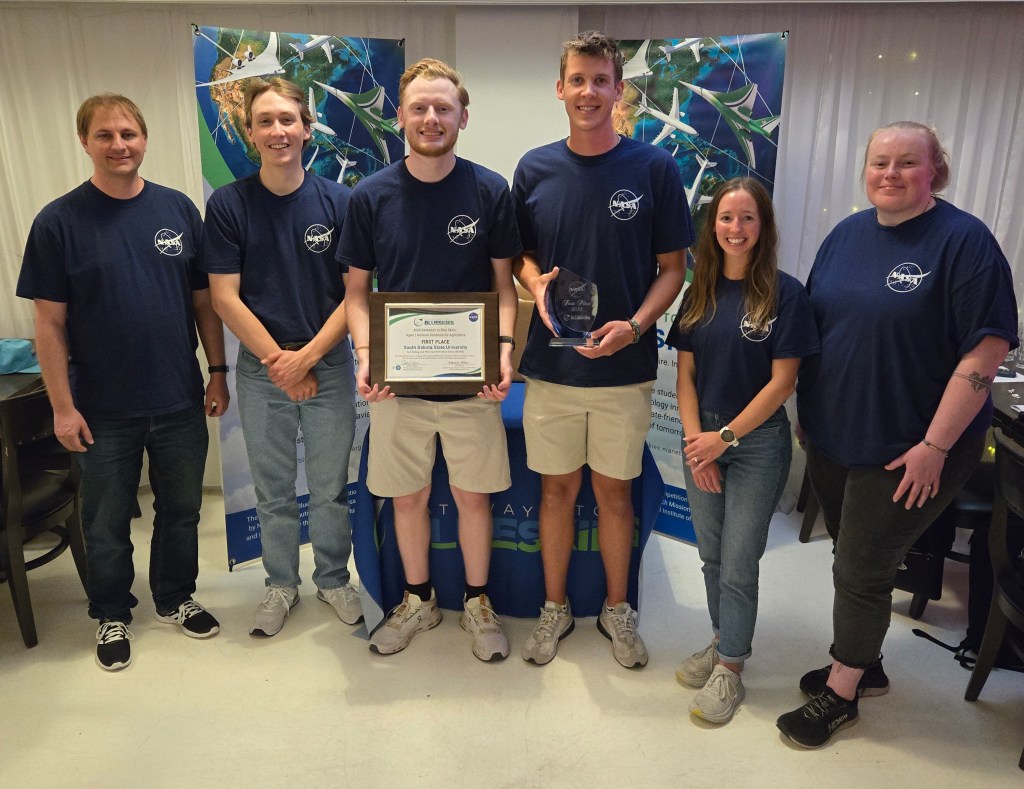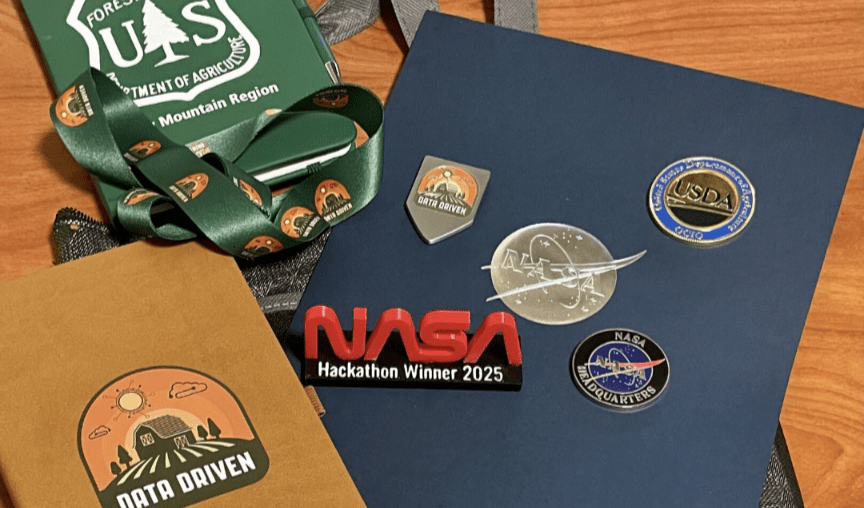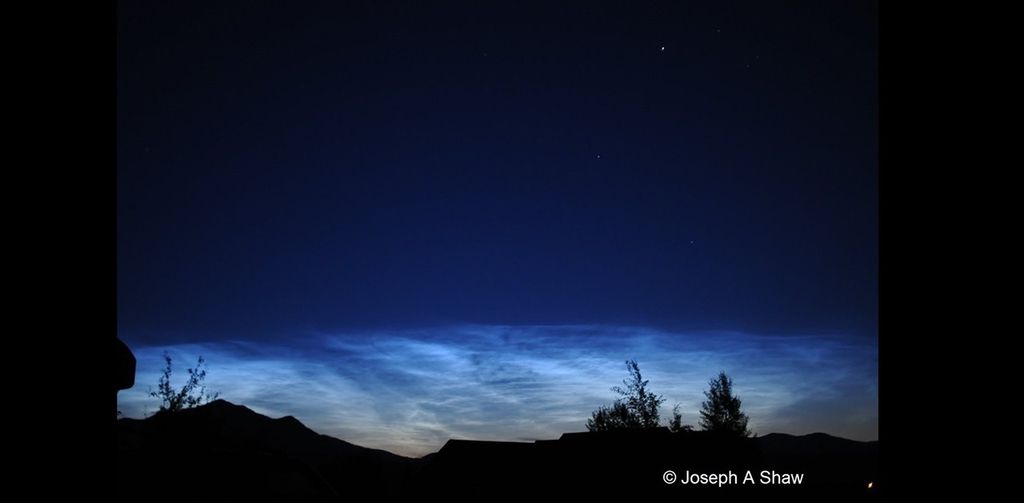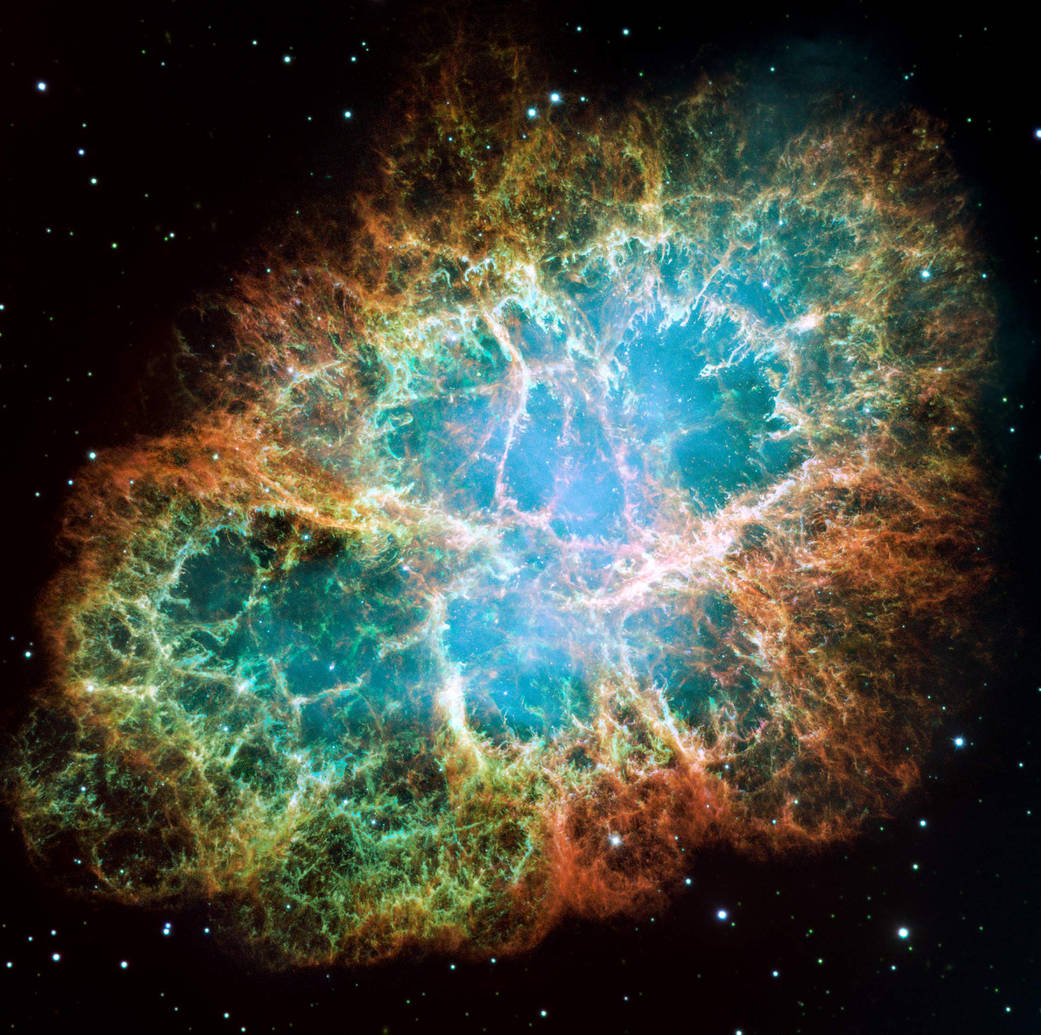This mosaic image, one of the largest ever taken by NASA’s Hubble Space Telescope of the Crab Nebula, is a six-light-year-wide expanding remnant of a star’s supernova explosion. Japanese and Chinese astronomers witnessed this violent event nearly 1,000 years ago in 1054, as did, almost certainly, Native Americans.
The orange filaments are the tattered remains of the star and consist mostly of hydrogen. The rapidly spinning neutron star embedded in the center of the nebula is the dynamo powering the nebula’s eerie interior bluish glow. The blue light comes from electrons whirling at nearly the speed of light around magnetic field lines from the neutron star. The neutron star, the crushed ultra-dense core of the exploded star, like a lighthouse, ejects twin beams of radiation that appear to pulse 30 times a second due to the neutron star’s rotation. The colors in the image indicate the different elements that were expelled during the explosion. Blue in the filaments in the outer part of the nebula represents neutral oxygen, green is singly-ionized sulfur, and red indicates doubly-ionized oxygen.Image Credit: NASA, ESA, J. Hester (Arizona State University)
1 min read


